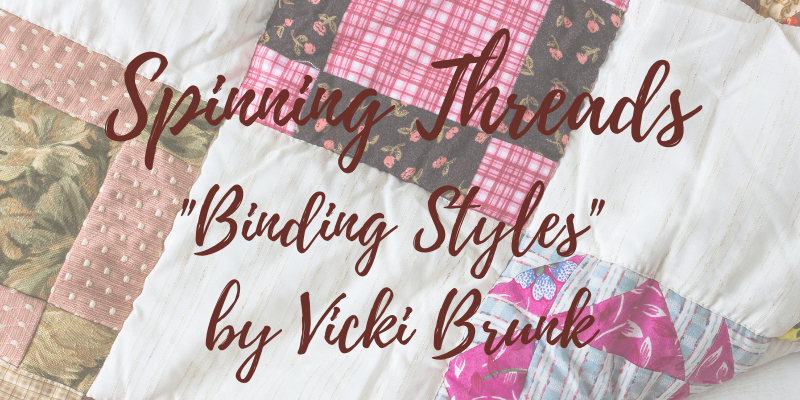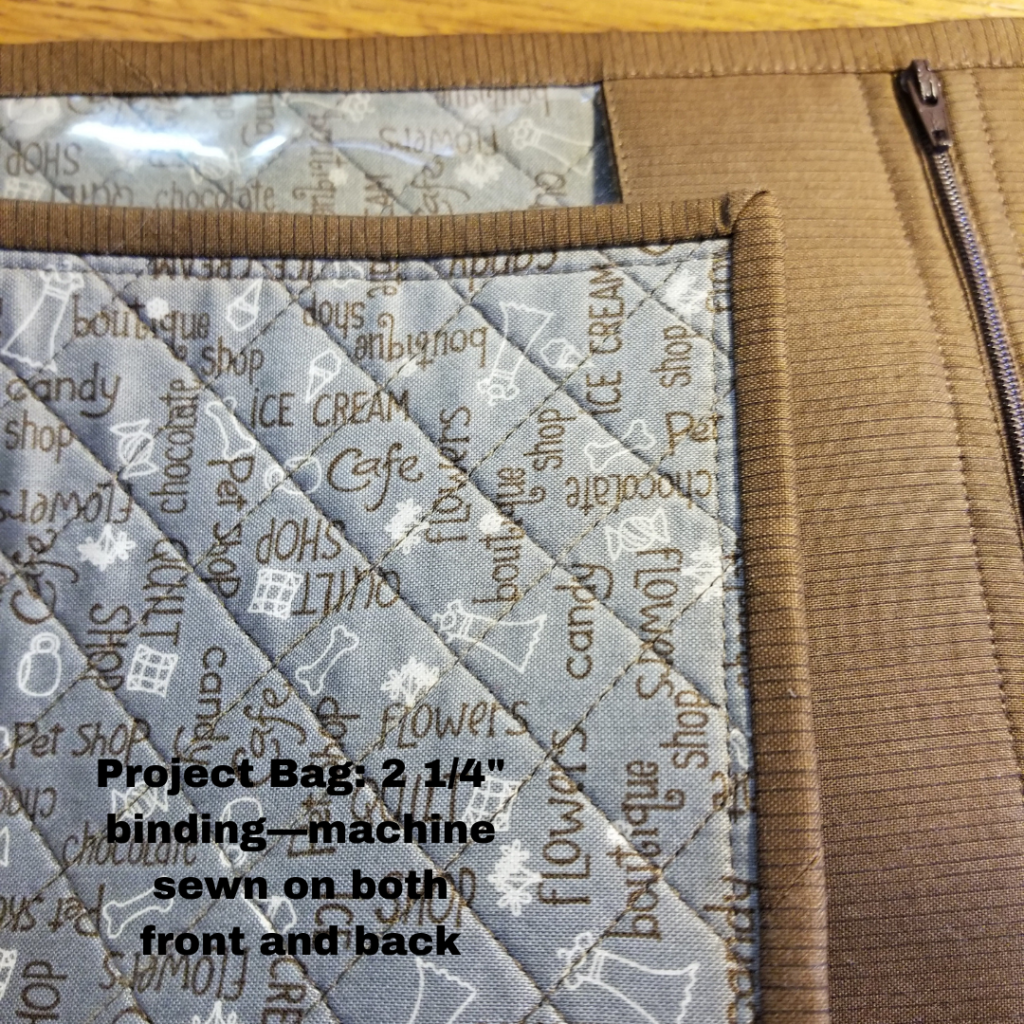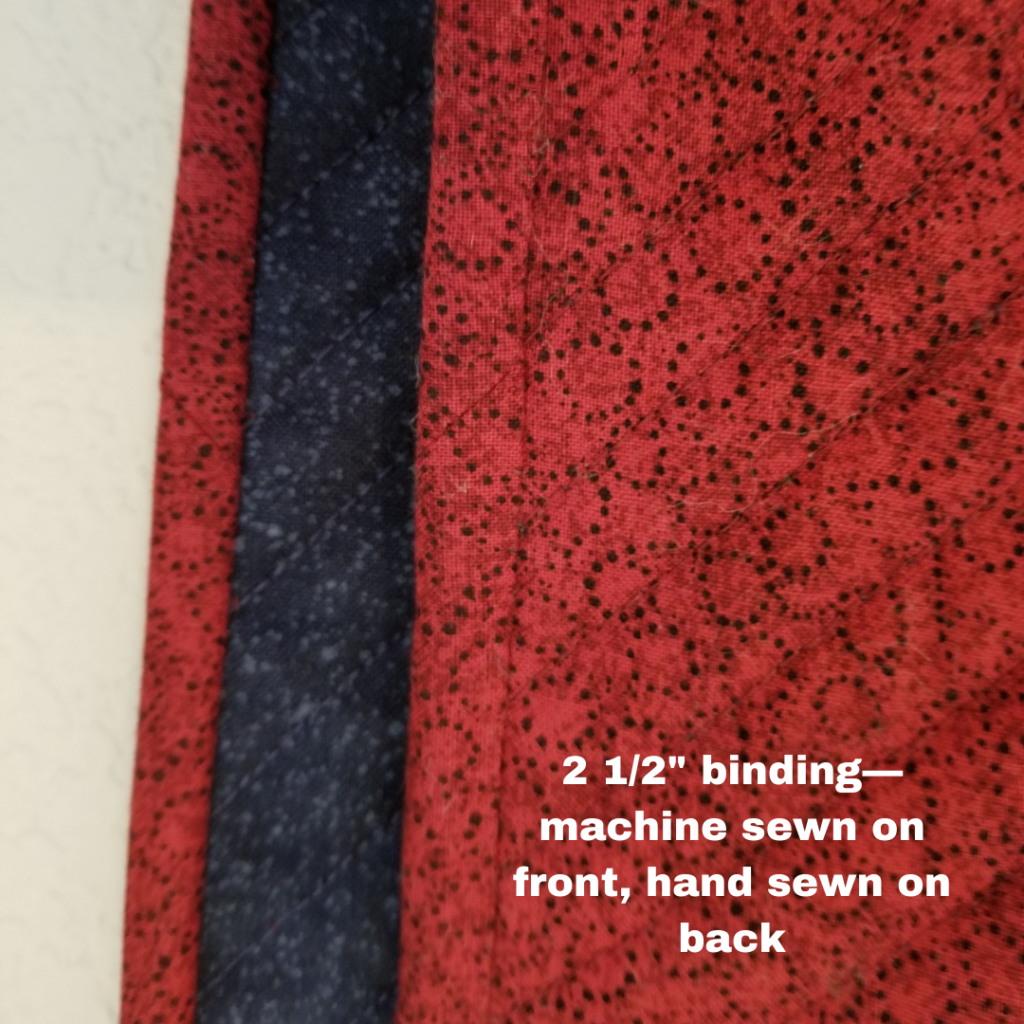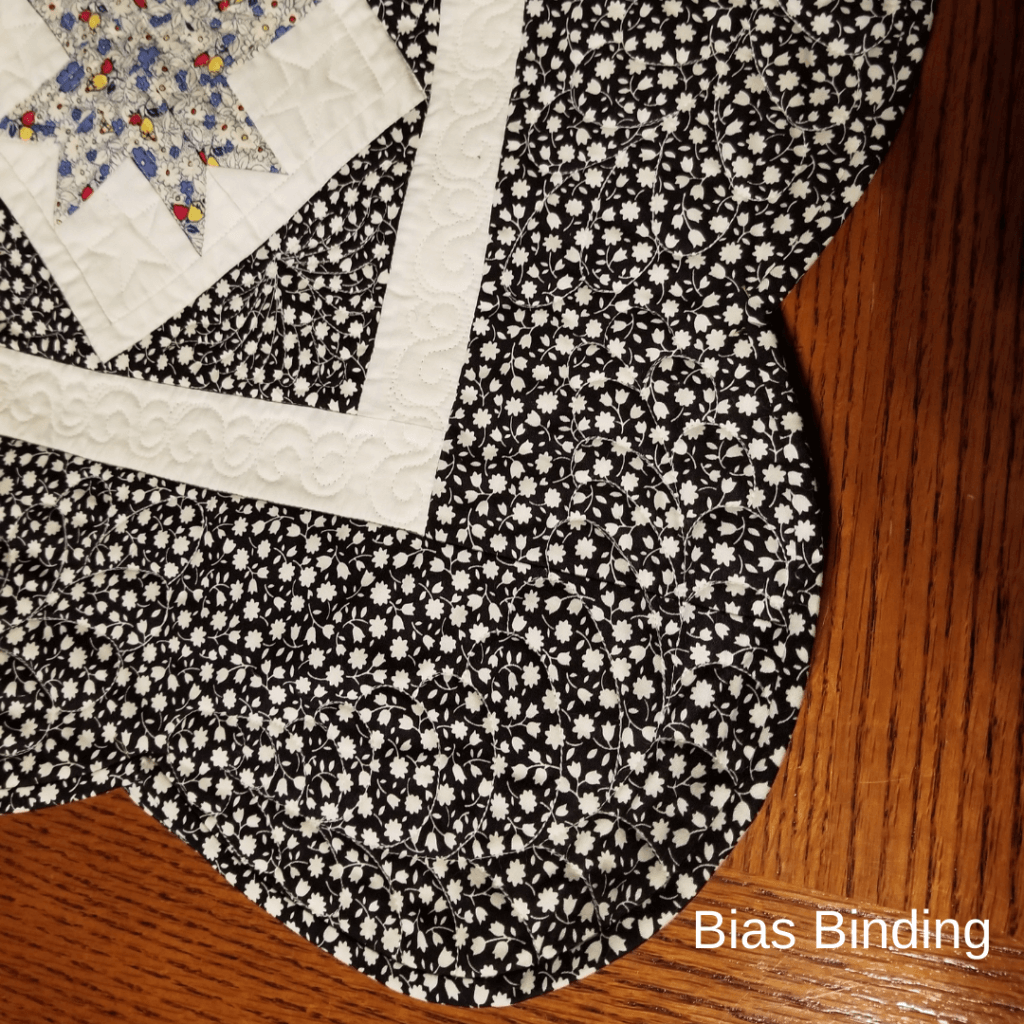By Vicki Brunk
You wouldn’t think there are that many styles/choices when it comes to binding, but there are.
- 2 1/2″ and 2 1/4″ French folded are the most popular. The strips are sewn together at 90-degree angles and folded (long way) right sides together and pressed. Seams between strips are always pressed open making the binding finish smoother and eliminating bulk.
- Single-fold binding is typically used on small quilts (IE: wall hangings) that don’t get handled much. Strips are typically cut 1 1/4″ wide.
- “Chubby” binding is wider on the back and typically made from 3″ strips.
- Scrappy binding consists of shorter lengths of fabric typically cut from leftover fabric from the quilt.
- Bias binding is necessary whenever the quilt edge is not straight as in a scalloped or hexagon-edge quilt. The strips are cut on the bias of the fabric. It has more “give” and makes going around curves easier and smoother without puckers.
All or most of the binding choices mentioned so far are machine sewn to the front of the quilt and hand-stitched on the back. I want to mention a method and purpose for another binding technique. Machine sewn-on binding front and back. It took a few quilts to perfect this and now I use this method on most utility quilts—ones that will be washed often such as kids’/baby quilts and most donation quilts. I also choose this method for bags and craft projects that have binding. It is much faster as well! This method is machine sewn to the back of the quilt first, turned to the front and machine sewn again. It holds up better for a well used (loved) quilt.
There are many more binding techniques not mentioned in this blog that I consider a little more challenging. Examples include two-color binding, binding with piping or rick rack or a flange. When it comes to binding you have to ask yourself one question, “What does my quilt need to finish it off and make it special?” If there is an interest in taking any of these binding methods as a class please contact a board member or me, directly. Once our education classes can start up again we can consider scheduling a class in binding.





